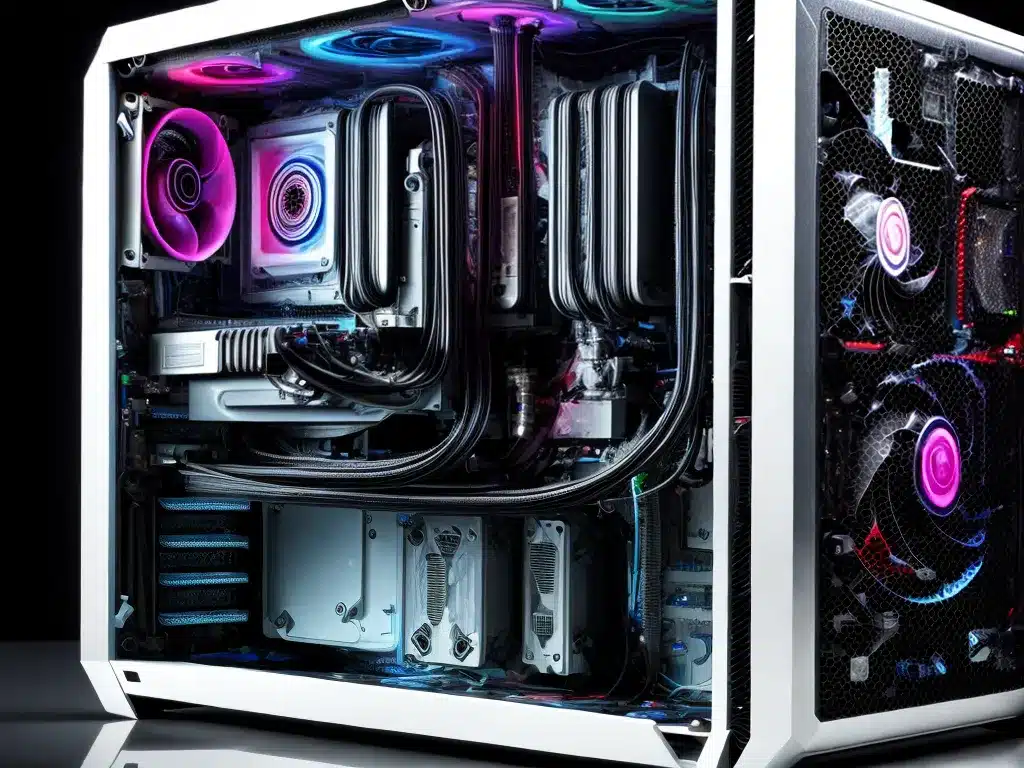
Why Condensation Forms
Condensation forms when warm, moist air comes into contact with a cold surface. This causes the moisture in the air to condense into water droplets on the colder surface.
In a PC, condensation typically forms for a few reasons:
-
Temperature Differential – There is a significant temperature difference between the warm, moist air inside your home and the cold metal components inside your PC case. This temperature differential causes condensation.
-
Poor Airflow – Inadequate airflow means warm air gets trapped inside your PC case. This warm air contacts cold components, causing condensation.
-
High Humidity – If the ambient humidity in your home is very high, there is more moisture in the air that can potentially condense inside your PC.
Potential Issues Caused by Condensation
Condensation inside your PC can lead to several problems:
-
Short Circuits – Water droplets can cause short circuits on electronic components and damage them.
-
Corrosion – The minerals in water can corrode metal components over time.
-
Dust Buildup – The water attracts more dust which clogs up heatsinks/fans.
-
Growth of Mold/Mildew – Prolonged condensation enables mold and mildew growth inside the PC case which can be difficult to remove.
So condensation definitely needs to be avoided to maintain your PC’s health.
Tips to Prevent Condensation in your PC
Here are some tips to help prevent or reduce condensation build up inside your PC case:
1. Improve Airflow
- Ensure your PC case has sufficient intake and exhaust fans.
- Make sure airflow pathways are unobstructed (manage cables cleanly).
- Use high static pressure fans for intakes/exhausts.
- Add more fans if needed (side panel fan helps greatly).
Good airflow maintains an even temp inside your case and avoids trapping warm air pockets.
2. Lower PC Internal Temperatures
- Clean dust filters often to improve airflow.
- Replace thermal paste on CPU and GPU to improve heat transfer.
- Undervolt your CPU/GPU slightly to reduce heat output.
- Use a better CPU cooler to keep CPU temps low.
Lower component temps prevent large temperature deltas versus room air.
3. Use Air Conditioning
- Run an AC unit during humid summer months to dehumidify ambient air.
- Position your PC case further away from cold drafty areas like AC vents or windows.
This prevents warm moist air from reaching your PC case.
4. Add Desiccant Packs
- Place silica gel desiccant packs inside your case. They absorb excess moisture.
- Recharge the desiccants periodically by drying them out.
Desiccants actively reduce humidity levels inside the enclosed case.
5. Waterproof Components
- Use conformal coating sprays to waterproof exposed PCBs.
- Sleeve or insulate exposed wire terminals.
This prevents short circuits if small amounts of condensation do form.
Summary
Condensation can definitely damage PC components if left unchecked. But with simple airflow improvements, temperature reductions, ambient humidity control, desiccants, and waterproofing, you can effectively eliminate condensation from building up inside your PC case. Implementing a few of these tips goes a long way in keeping your system healthy long term.












